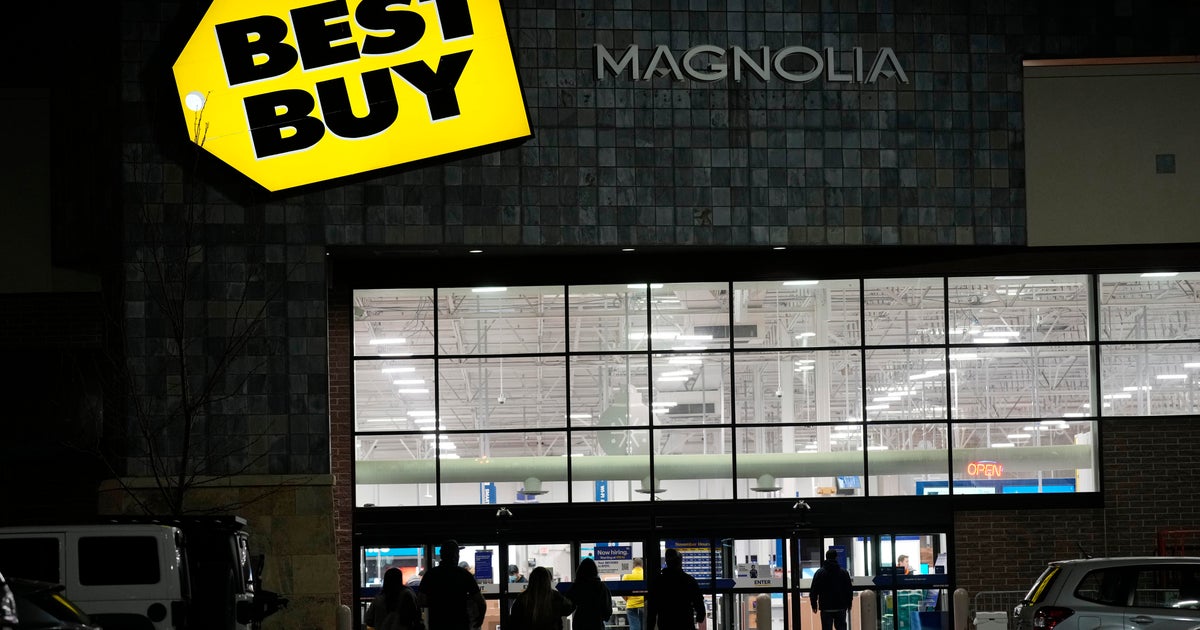Consumer prices and retail sales dip, stirring doubts on economy
WASHINGTON -- U.S. retail sales fell for a second straight month in March and consumer prices dropped for the first time in 13 months, supporting views that the economy lost significant momentum in the first quarter.
But with the labor market near full employment, the decline in both sales and consumer prices is likely to be temporary and probably does not change expectations that the Federal Reserve will raise interest rates again in June.
The U.S. Labor Department said its Consumer Price Index dropped 0.3 percent in March, the first decline since February 2016, as declining costs for gasoline and mobile phone services offset rising rents and food prices.
The CPI nudging up 0.1 percent in February. In the 12 months through March, the CPI rose 2.4 percent, slowing from February’s 2.7 percent increase.
“Some Fed officials will be disturbed by the unexpected drop back in core inflation, but this won’t prevent a June rate hike,” said Paul Ashworth, chief U.S. economist at Capital Economics in Toronto. He said a number of “one-off factors” were behind the muted inflation results, such as an influx of cars whose leases expired and were put up for sale at discounts.
The U.S. Commerce Department said on Friday retail sales dropped 0.2 percent last month after a 0.3 percent decrease in February, which was the first and biggest decline in nearly a year. Compared to March last year retail sales increased 5.2 percent.
Economists polled by Reuters had forecast retail sales slipping 0.1 percent last month. Excluding automobiles, gasoline, building materials and food services, retail sales rebounded 0.5 percent after falling 0.2 percent in February.
These so-called core retail sales correspond most closely with the consumer spending component of gross domestic product.
Despite last month’s increase in core retail sales, consumer spending likely braked sharply in the first quarter after growing at a brisk 3.5 percent annualized rate in the final three months of 2016. The apparent slowdown in consumption is partly blamed on the late disbursement of income tax refunds by the government as it sought to combat fraud.
“These data are impossible to square with the stratospheric levels of consumer confidence recorded across an array of surveys,” said Ian Shepherdson, chief economist Pantheon Macroeconomics
The Atlanta Fed is forecasting GDP rising at a 0.6 percent rate in the first quarter. This would be the weakest performance in three years and follows a 2.1 percent growth pace in the fourth quarter, who expects a pickup in spending in the months ahead.
With job growth averaging 178,000 per month in the first quarter, the anticipated slowdown in GDP likely understates the health of the economy. In addition, first-quarter GDP tends to be weaker because of calculation problems that the government has acknowledged and is working to resolve.
Retail sales last month were dragged down by receipts at auto dealerships, which fell 1.2 percent, decreasing for a third straight month. Sales at service stations dropped 1.0 percent, reflecting lower gasoline prices.
Receipts at building material stores fell 1.5 percent, likely as bad weather halted work at construction sites. There were, however, areas of strength in March’s retail sales report.
Sales at electronics and appliances stores surged 2.6 percent, the largest increase since June 2015. Receipts at clothing stores climbed 1.0 percent, the biggest advance since February 2016. Retailers have been hurt by declining mall traffic and increased competition from online retailers, led by Amazon.com (AMZN).
That has forced retailers like J.C. Penney (JCP), Abercrombie & Fitch (ANF) and Macy’s (M) to scale back on brick-and-mortar operations.
The dollar was little moved by the data. U.S. stocks and Treasuries markets are closed for the Good Friday holiday.
On the inflation front, the so-called core CPI, which strips out food and energy costs, fell 0.1 percent, the first and largest decrease since January 2010, after rising 0.2 percent in February. As a result, the year-on-year increase slowed to 2.0 percent.
That was the smallest advance since November 2015 and followed a 2.2 percent increase in February. The Fed has a 2 percent inflation target and tracks an inflation measure which is currently at 1.8 percent.
A 6.2 percent drop in gasoline prices was the biggest factor in the monthly decline in the CPI. Monthly consumer inflation was also weighed down by a record 7.0 percent drop in the cost of wireless telephone services. Still, consumers paid more for food and rents last month.
Rents increased 0.3 percent in March after a similar gain in February. Owners’ equivalent rent of primary residence rose 0.2 percent after climbing 0.3 percent in February.
Food prices rose 0.3 percent. The cost of food consumed at home increased 0.5 percent, the biggest gain since May 2014.



